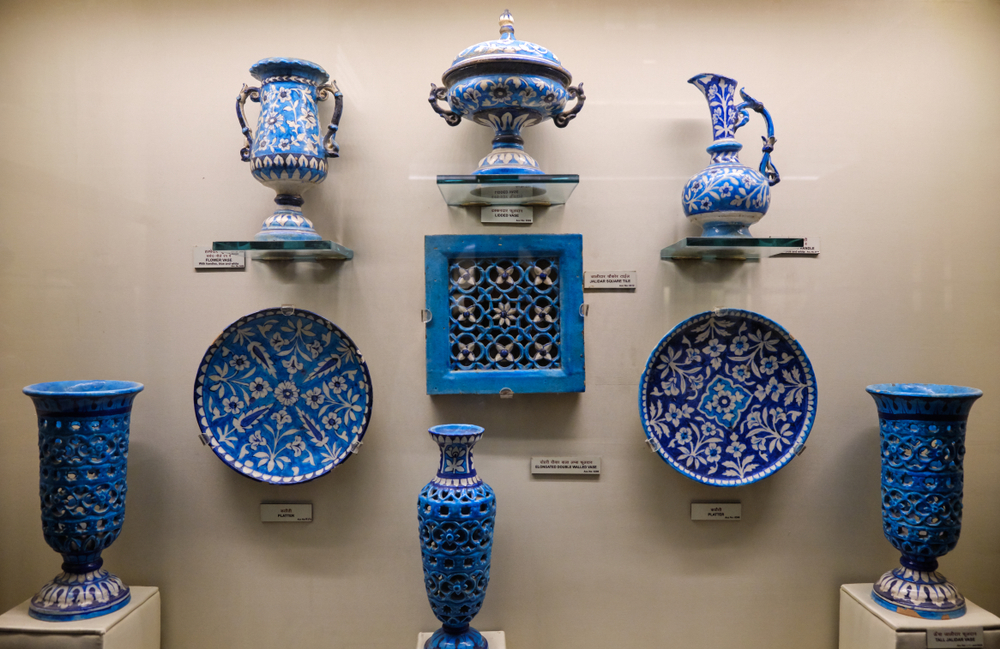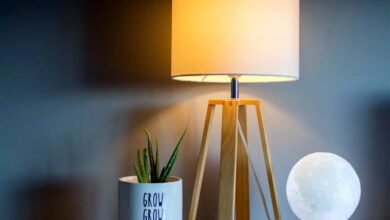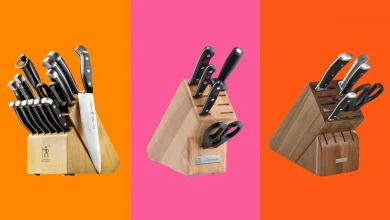Rajasthan has always been known for its rich culture and heritage. This beautiful state is situated in the northwestern part of India and is famous all around the world for its intricate Rajasthani Handicrafts that reflect the true culture of the state. These handicrafts are really the epitome of art and culture. There are thousands of art forms that are practiced in this state and around 6 lakh artisans live here. One such form of Rajasthani Handicrafts is Blue Pottery. Blue Pottery is a unique style of pottery that originated in Persia and was brought to India by the Mughal Empire. This art form was first learned by the Rajasthani artists and thus it is highly recognized as a type of Rajasthani Handicrafts.
The Rajasthani artists added some traditional touch to this art form and evolved it over time by creating a unique fusion of traditional and contemporary art.
History of Blue Pottery
The art of Blue Pottery was first introduced to Rajasthan in the early 19th century by a group of artists from Multan, Pakistan. This group of artists was really skilled and after settling in Jaipur, Rajasthan they started to spread this art form by creating unique designs and patterns through local techniques and traditions. They were the ones who added a touch of Rajasthani tradition to this art form. They started with a blue dye to color the pottery, which gave it a unique identity.
Themes and Techniques
Blue pottery is characterized by its vibrant blue color, intricate designs, and translucent texture. The designs are often inspired by nature, with floral motifs and bird patterns being popular choices. The pottery is made by mixing quartz, glass powder, and multani mitti (a type of clay) to create a dough-like substance. This substance is then shaped by hand or using molds and left to dry in the sun.
Once the pottery is dry, it is glazed and fired in a kiln at a high temperature. The glazing process gives the pottery its translucent texture and a glossy finish. The blue color is achieved by adding cobalt oxide to the glaze.
Fusion of Traditional and Contemporary Art
Over the years, the art of Blue pottery has gained immense popularity. This art form has evolved to incorporate traditional and contemporary designs and techniques. The artisans have kept on experimenting with various colors, designs, and patterns to create a wide array of products in this art form to provide customers with a range to choose from. At present, blue pottery is just not limited to creating traditional products such as plates, bowls, and vases but also contemporary products such as lampshades, jewelry, home decor items, etc.
This fusion of traditional and contemporary art has helped blue pottery and also the artisans attached to it gain popularity both domestically and internationally. The unique identity of this art form has also helped it stand out in a crowded market.
Challenges and Revival
Despite its immense popularity, this art form has faced several challenges in recent years. The availability of raw materials, high cost of production, and lack of skilled artisans have started the decline of blue pottery. Among all these the major factor is the lack of skilled artisans. Also, the competition for cheaper and mass-produced products is affecting this art form.
To revive this traditional art form, many organizations as well as artists have come together. Also, to preserve and promote the art of blue pottery. Many workshops, as well as training centers, have been established. Where young artists can learn the skills required for blue pottery. Also, they have worked to create some new designs and techniques to give a modern taste to this art form. You can search for Rajasthani Handicrafts Online or Blue Pottery to gain some more knowledge about this art form.
Conclusion
Rajasthani Blue Pottery is a fusion of traditional and contemporary art that reflects the rich cultural heritage of Rajasthan. Also, the vibrant blue color, intricate designs, and translucent texture make it a unique and popular art form. Despite facing challenges, the art of blue pottery is being revived and promoted by organizations and artisans. The fusion of traditional and contemporary art has helped blue pottery evolve and stay relevant in today’s world.





